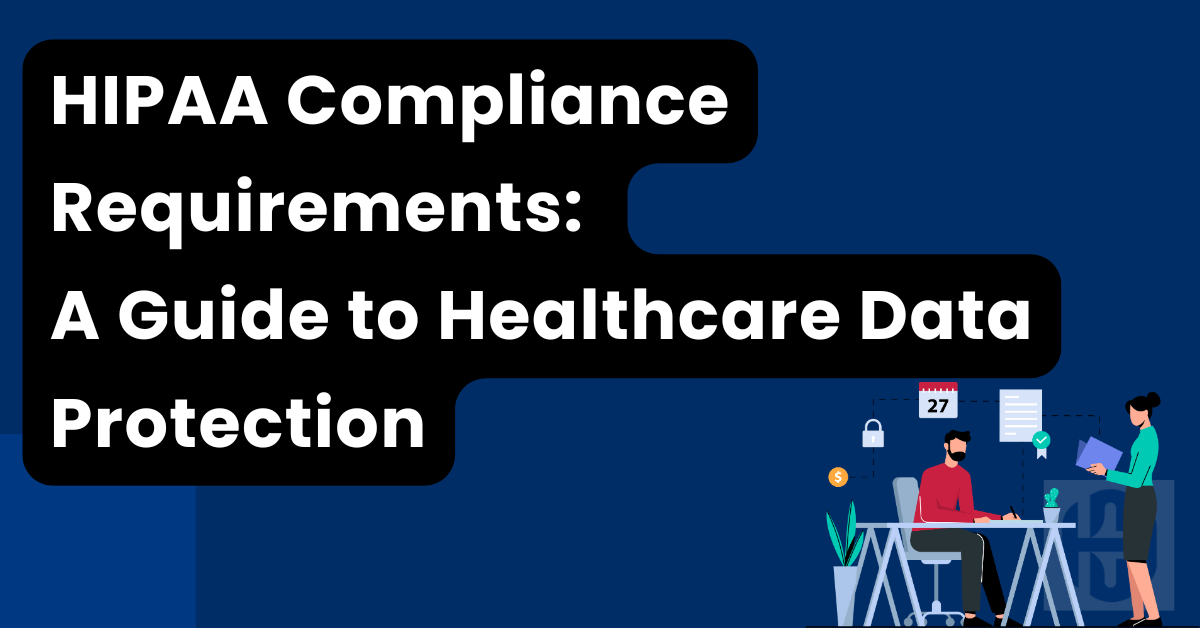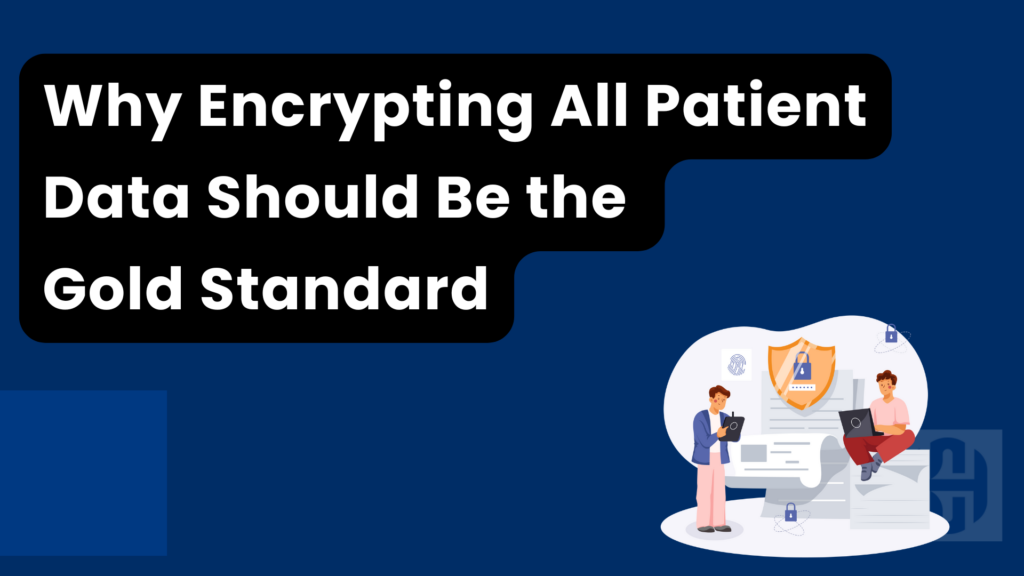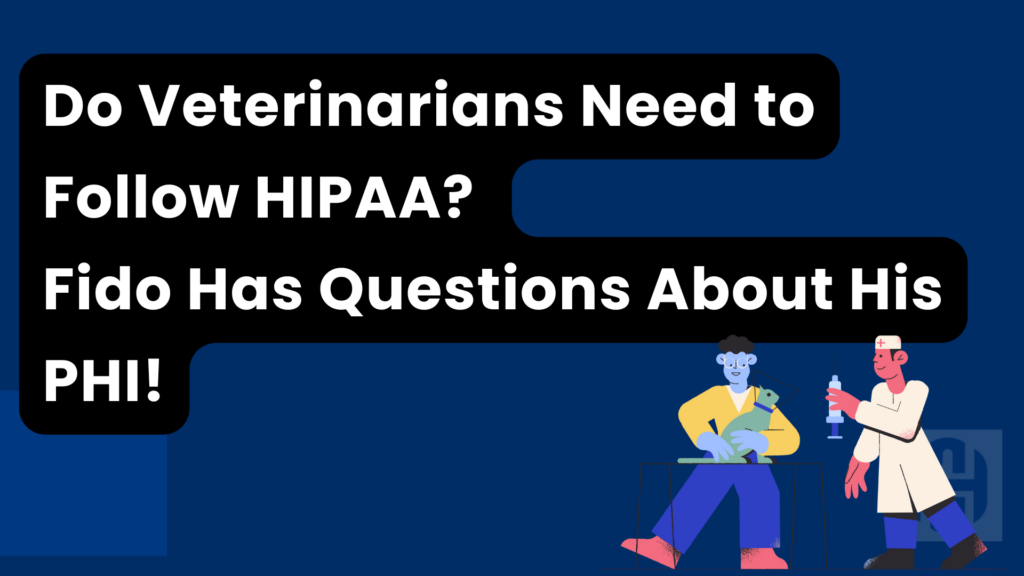Navigating HIPAA compliance can feel overwhelming, but it’s a necessary journey for healthcare providers, covered entities, and their business associates.
HIPAA, short for the Health Insurance Portability and Accountability Act, plays a critical role in healthcare data protection by defining standards that protect patient privacy, secure electronic protected health information (ePHI), and establish guidelines for organizations handling health data.

The Need for HIPAA Compliance
As healthcare increasingly relies on digital tools for record-keeping and operations, protecting patient data is paramount. The Health Insurance Portability and Accountability Act (HIPAA) was established to secure protected health information (PHI) and ensure it’s handled responsibly.
HIPAA compliance helps organizations avoid unauthorized disclosure, which can lead to identity theft, medical fraud, and significant fines for non-compliance. For healthcare providers, compliance isn’t just a legal obligation; it’s a commitment to maintaining trust and safeguarding patients’ health and privacy as they transition to digital systems like electronic health records (EHRs).
What Does HIPAA Require?
At the heart of HIPAA are clear, yet extensive, requirements for safeguarding protected health information (PHI). These requirements fall into three main HIPAA rules:
HIPAA Privacy Rule
HIPAA Security Rule
HIPAA Breach Notification Rule
Each rule addresses distinct aspects of data protection, making it easier for organizations to understand and implement compliance standards. But it’s not just about adhering to regulations—it’s about creating a trust-filled environment that respects the privacy and security of patients’ sensitive data.
What are the Core HIPAA Rules?
Let's understand the core HIPAA rules.
1. HIPAA Privacy Rule: Patient Privacy First
The Privacy Rule sets national standards for protecting individually identifiable health information, covering any data that could identify a patient. This rule grants patients specific rights, like accessing and amending their health records. It also restricts how covered entities (healthcare providers, health plans, and healthcare clearinghouses) use and disclose PHI without patient authorization.
According to HHS, the Privacy Rule applies to any form of health information, whether it’s electronic, paper-based, or oral, as long as it contains identifiable data. This rule essentially empowers patients, giving them control over how their personal health details are handled.
HIPAA Privacy Rule Checklist
To comply with the HIPAA Privacy Rule, healthcare organizations must follow a clear set of steps:
Notify patients of their privacy rights and how their information is used.
Adopt and implement privacy policies within the organization and conduct regular training for employees.
Designate a privacy official to manage compliance efforts and ensure adherence to procedures.
Limit the use and disclosure of PHI to the minimum necessary for operational purposes.
Establish safeguards for storing and handling PHI, whether it’s digital, verbal, or physical. These guidelines help organizations maintain patient privacy and prevent unauthorized data exposure.
2. HIPAA Security Rule: Safeguarding ePHI
Unlike the Privacy Rule, which applies broadly, the Security Rule specifically protects electronic protected health information (ePHI). The rule requires three types of safeguards—administrative, physical, and technical—to protect ePHI from unauthorized access or breaches.
Administrative Safeguards: Policies, procedures, and workforce training that manage data protection. Every covered entity’s workforce member needs to be trained on HIPAA standards to mitigate security risks and to help operationalize the Security Rule.
Physical Safeguards: Measures to secure facilities, like access controls, device security, and procedures for disposing of hardware containing sensitive data.
Technical Safeguards: Include access controls, audit controls, and transmission security to protect ePHI from unauthorized access during electronic exchanges.
These safeguards provide a robust framework for covered entities and business associates, ensuring the security rule operationalizes data security in healthcare environments.
Who is Covered by the Security Rule?
The HIPAA Security Rule applies to entities that create, receive, maintain, or transmit electronic protected health information (ePHI), covering a broad range of healthcare organizations. This includes healthcare providers, health plans, and healthcare clearinghouses that handle electronic health data.
Additionally, business associates—such as billing services or cloud storage providers—who manage PHI on behalf of covered entities must also comply with the rule. Exceptions include small group health plans with fewer than 50 participants that are self-administered by an employer, which are not covered under HIPAA.

3. HIPAA Breach Notification Rule: Transparency in Data Breaches
The Breach Notification Rule is essentially a safety net. If ePHI is breached, covered entities and business associates must notify the affected individuals, the Health and Human Services (HHS) Secretary, and sometimes the media, depending on the scale of the breach. The HHS Breach Notification Rule guide provides extensive guidelines.
Covered Entities and Business Associates: Who Must Comply?
Covered entities include health plans, healthcare clearinghouses, and any health care providers who electronically transmit health information. HIPAA also extends to business associates—organizations or individuals performing services that involve PHI access on behalf of a covered entity. Examples of business associates might include third-party billing services or cloud storage providers for ePHI.
It’s also important to consider that subcontractors of business associates are subject to HIPAA compliance. This expanded scope emphasizes that any organization handling PHI, even indirectly, must have safeguards in place to protect data.
HIPAA Compliance Guidelines: Five Essentials
Regular Risk Assessments: A HIPAA-compliant organization must continuously assess security risks. Identifying risks enables entities to put preventive measures in place and ensure robust data protection.
Establish Business Associate Agreements (BAAs): Business associates need to sign BAAs with covered entities, outlining their compliance responsibilities. This helps create a network of accountability.
Develop and Enforce Security Policies: Each covered entity must establish and maintain policies covering everything from PHI access to data transmission security.
Ensure Workforce Training: HIPAA requires all employees who handle PHI to receive compliance training. Training should cover both the Privacy and Security Rules and the organization’s specific policies.
Implement Data Safeguards: Protecting PHI requires a combination of physical and technical safeguards, from securing devices to ensuring encrypted data transmission.
Three Types of Safeguards Required by HIPAA’s Security Rule
To protect ePHI, HIPAA outlines specific safeguards in three categories:
Physical Safeguards: Protect physical access to data and devices, which includes facility access and secure hardware.
Technical Safeguards: Cover aspects like encryption, user authentication, and access control.
Administrative Safeguards: Require documented policies and regular security audits to manage ePHI access.
Physical and Technical Safeguards for HIPAA Compliance
The Security Rule mandates both physical and technical safeguards to ensure ePHI protection:
Physical Safeguards:
Organizations must control access to physical locations where data is stored, including access to buildings, workstations, and devices. Security measures might include locks, surveillance, and restricted access to areas with PHI.
Technical Safeguards:
These safeguards protect ePHI during storage and transmission, requiring encryption, authentication processes, and secure data-sharing protocols. Access controls limit data access to authorized individuals, while audit controls track data access and usage to prevent unauthorized interactions.
HIPAA Compliance for IT Systems
IT systems in healthcare play a critical role in maintaining HIPAA compliance. Systems used to store or process ePHI must include secure configurations, like strong access controls, regular data backups, and robust disaster recovery plans.
IT teams should conduct regular risk assessments to identify potential vulnerabilities in ePHI security and ensure ongoing compliance in line with HIPAA’s technical requirements.
What Makes Data HIPAA-Compliant?
Achieving HIPAA compliance isn’t as simple as adding a lock to a filing cabinet. It’s about creating a comprehensive approach that protects data in all its forms, particularly electronic health records. Here’s how data becomes HIPAA-compliant:
Encryption: Encrypting ePHI makes it unreadable to unauthorized users.
Access Control: Only authorized personnel should access PHI.
Audit Controls: Regular audits monitor data access and identify potential weaknesses.
These technical and nontechnical safeguards are vital for creating HIPAA-compliant data security.
Regulatory Standards in Healthcare: Beyond HIPAA
HIPAA is only one component of healthcare compliance. Other regulations affecting healthcare practices include:
HITECH Act: This act expands HIPAA’s focus on data security, promoting the use of electronic health records.
GDPR: While it primarily affects the EU, GDPR’s data protection requirements are relevant for any organization dealing with EU citizens’ data.
These standards create an additional layer of security, helping organizations avoid data breaches and protect sensitive patient data.
HIPAA Violations and Penalties: Consequences of Non-Compliance
HIPAA violations can result in substantial fines and reputational damage. Penalties vary depending on the violation’s severity and range from civil money penalties to potential criminal charges in extreme cases.
Even an accidental breach due to poor security measures can lead to costly repercussions. According to the HHS Office for Civil Rights (OCR), penalties can reach $1.5 million per year for the most severe violations.
HIPAA Training and Certification: Building a Culture of Compliance
Training is essential to avoid HIPAA violations. HIPAA Certify has HIPAA compliance training for all skill levels and industries that handle PHI .
This training typically covers everything from recognizing a HIPAA-covered entity to understanding when a business associate must sign a compliance agreement. HIPAA certification isn’t legally required, but it’s a practical way to enhance compliance and protect patient data.
Self-Audit Checklist for HIPAA Compliance
Conducting a self-audit is an effective way for organizations to evaluate their compliance with HIPAA regulations. This includes assessing security practices, reviewing business associate agreements (BAAs), and verifying that policies align with HIPAA standards.
Regular audits help identify areas needing improvement, reduce the risk of costly violations, and ultimately strengthen an organization’s data protection practices. Organizations can leverage audit tools provided by the HHS for a thorough review of privacy, security, and breach notification compliance requirements

Final Thoughts on HIPAA Compliance
HIPAA compliance is more than a legal obligation—it’s a commitment to patient trust. By following these regulations, covered entities and business associates can protect the privacy and security of their patients’ most sensitive information.
Embracing risk assessment, rigorous training, and physical and technical safeguards helps build a compliance culture that’s equipped for today’s complex data environment.
In a healthcare setting, achieving HIPAA compliance isn’t just about checking boxes. It’s about fostering a responsible approach to data protection, ensuring patients’ peace of mind, and maintaining the trust that’s crucial for any healthcare provider.





